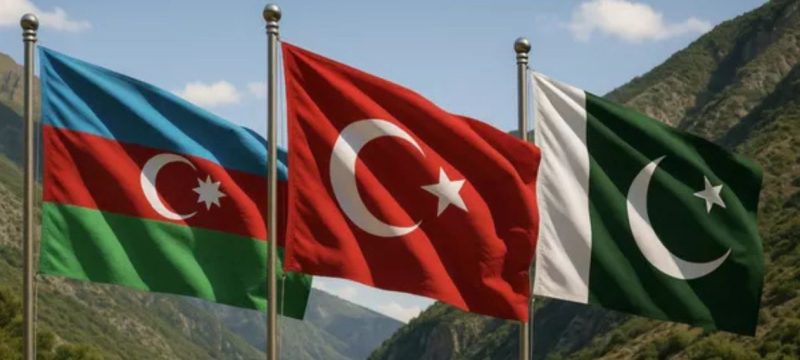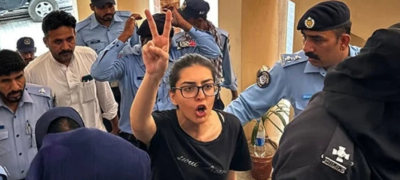Introduction
Türkiye, Pakistan, and Azerbaijan—often referred to as the “three brothers”—have solidified a
unique trilateral relationship based on shared political interests, cultural ties, and strategic defense
collaboration. This alliance has matured significantly over the last decade, especially following the
2020 Nagorno-Karabakh conflict, where both Türkiye and Pakistan offered robust support to
Azerbaijan.
This article explores the growing defense cooperation among the three nations, focusing on two key
developments: the acquisition of Pakistan’s JF-17 Block III fighter jets by Azerbaijan and the joint
participation of all three countries in Türkiye’s indigenous fifth-generation fighter jet program,
Kaan.
Background: The Roots of the “Three Brothers” Alliance
The term “three brothers” is not merely symbolic. Türkiye was the first country to recognize
Azerbaijan’s independence in 1991, with Pakistan following suit shortly after. This political
solidarity transitioned into military support, particularly during the 2020 war over NagornoKarabakh. A formal trilateral meeting in Islamabad in 2021 marked a turning point, where all three
nations agreed to deepen cooperation in politics, defense, trade, and regional security.
JF-17 Block III: Azerbaijan’s Leap in Air Power
In February 2024, Azerbaijan signed a $1.6 billion agreement with Pakistan to acquire at least 50
JF-17 Block III fighter jets. Jointly developed by Pakistan Aeronautical Complex (PAC) and
China’s Chengdu Aircraft Industry Corporation, the Block III variant represents a major upgrade
over its predecessors. Equipped with AESA radar, improved stealth features, and advanced
avionics, the JF-17 Block III offers performance on par with several fifth-generation capabilities.
Crucially, these jets will be armed with Türkiye’s Gökdoğan (Beyond-Visual-Range) and
Bozdoğan (Within-Visual-Range) air-to-air missiles, marking an unprecedented integration of
Turkish, Pakistani, and Chinese technologies. This combination is expected to significantly boost
the lethality and versatility of the Azerbaijani Air Force, replacing its older Russian MiG-29 and
SU-25 fleets.
President Ilham Aliyev confirmed in September 2024 that the aircraft had already been inducted
into Azerbaijan’s air force. The deal also includes pilot training and logistics support,
underscoring Pakistan’s expanding role as a regional defense supplier.
The Kaan Fighter Jet: A Shared Ambition
After Türkiye’s exclusion from the U.S.-led F-35 program in 2019, it accelerated work on its own
fifth-generation jet—the Kaan, developed by Turkish Aerospace Industries (TAI). The first
prototype took flight in 2023, and the program is expected to span a decade in development.
Azerbaijan and Pakistan are key partners in this ambitious project. Azerbaijan is providing
financial investment and industrial backing, while Pakistan is contributing technical expertise
and engineering personnel. In January 2025, Türkiye and Pakistan signed an agreement to
establish a joint production facility for the Kaan jet, marking a new era of integrated defense
manufacturing.
This facility will not only reduce production costs but also expand the export potential of the
aircraft, benefitting both Türkiye and Pakistan. The collaboration further strengthens the trilateral
defense bond and highlights a shift toward regional self-reliance in defense production.
Strategic and Industrial Implications
The integration of the JF-17 and Kaan programs into Azerbaijan’s defense strategy signals a
departure from decades of dependency on Russian arms. It also enhances Azerbaijan’s combat
readiness amid evolving regional threats. At the same time, Türkiye’s defense exports continue to
grow, reaching $7.2 billion in 2024, placing it among the world’s top emerging arms exporters.
Meanwhile, China, though not officially involved in the Kaan project, is seen as a silent
stakeholder due to its strategic alliance with Pakistan. Western observers have raised concerns
about potential Chinese influence on the program via Pakistani collaboration. These suspicions are
compounded by the project’s emphasis on cost-effective production, a hallmark of Chinese defense
exports.
On the geopolitical front, India’s deepening defense ties with Armenia, Azerbaijan’s rival, have
also intensified the strategic stakes. Armenia has emerged as India’s top arms export destination,
introducing a new layer of complexity to South and Central Asian defense alignments.
The Road Ahead: Toward a Defense Ecosystem
In addition to fighter jets, the three nations are collaborating in other advanced military
technologies. Turkish drone systems are being used in joint training and integrated operations by all
three militaries. Türkiye is also experimenting with “loyal wingman” drones to support the Kaan
jet, hinting at future unmanned-autonomous collaborations among the “three brothers.”
The synergy of strategic vision, industrial capacity, and political will positions the alliance to
launch additional large-scale projects in aerospace, cybersecurity, and advanced munitions.
The defense partnership among Türkiye, Pakistan, and Azerbaijan is evolving into a strategic
trilateral axis, underpinned by mutual interests, technological integration, and geopolitical
alignment. The JF-17 Block III acquisition and Kaan fighter collaboration exemplify how
emerging powers can forge self-sustaining military-industrial ecosystems.
If successful, these projects will not only transform the air forces of Azerbaijan and Pakistan but
also reshape the regional balance of power. The trilateral model may serve as a blueprint for
future regional defense cooperation—one that is independent, innovative, and strategically resilient.









